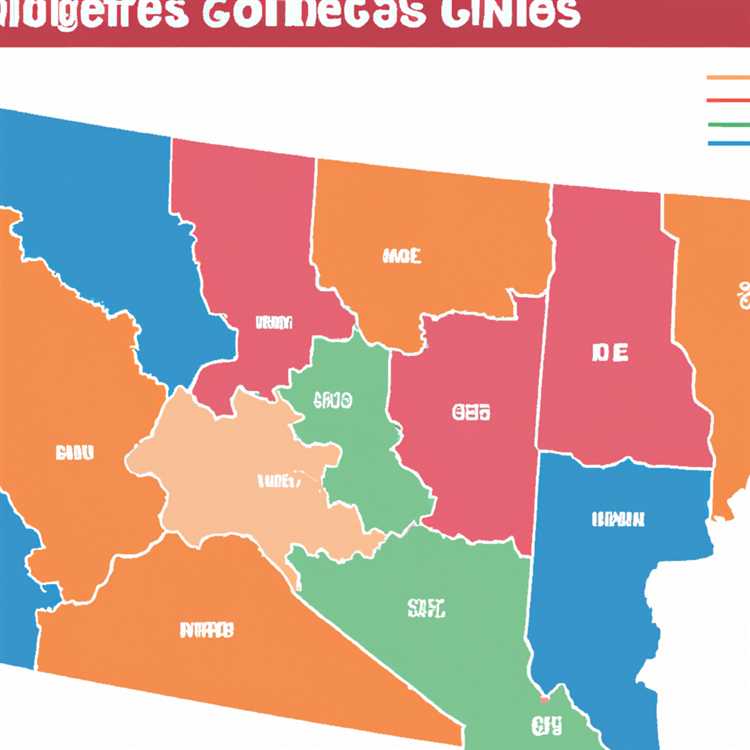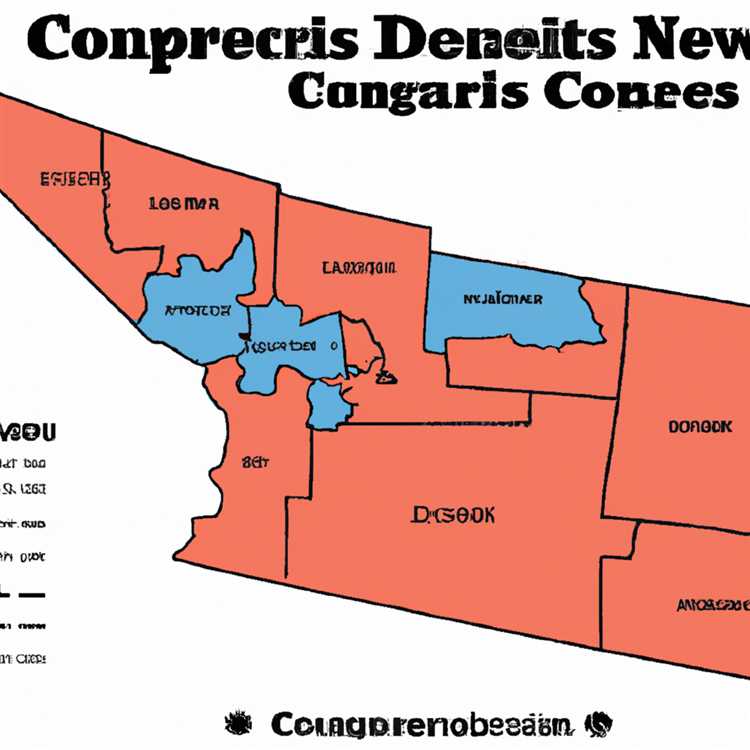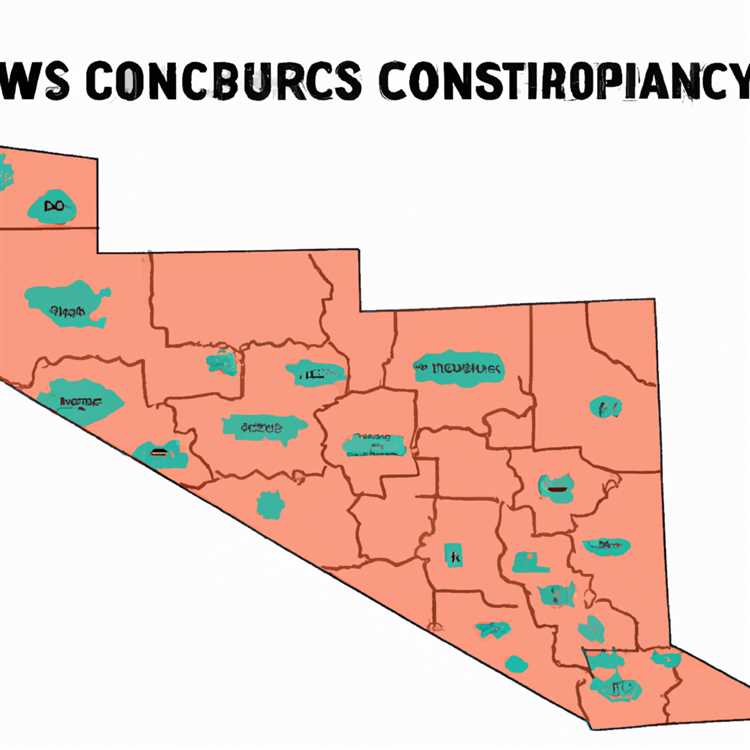
When it comes to understanding the political landscape of Arizona, it’s important to have a comprehensive understanding of its congressional districts. These districts play a crucial role in shaping the state’s representation in the United States Congress, and understanding their boundaries and demographics can provide valuable insight into Arizona’s political dynamics.
Arizona is divided into a total of nine congressional districts, each of which is represented by a member of the U.S. House of Representatives. These districts are redrawn every ten years following the U.S. Census to ensure equal representation for the state’s population. This process, known as redistricting, takes into account various factors such as population size, geographical features, and political considerations.
Each congressional district in Arizona is home to diverse communities with unique needs and interests. From the bustling urban areas of Phoenix and Tucson to the sprawling rural regions, each district has its own distinct character. Understanding the demographics of these districts can help us grasp the political leanings and priorities of the residents.
Furthermore, the congressional elections in Arizona are closely watched by political analysts and pundits due to the state’s competitive nature. While some districts lean heavily towards one party or the other, there are a few swing districts that can shift the balance of power in the state. In recent years, Arizona has emerged as a battleground state with several high-profile races that have attracted national attention.
In this comprehensive guide to Arizona’s congressional districts, we will delve into the boundaries, demographics, and political dynamics of each district. Whether you are a political enthusiast, a resident of Arizona, or a curious observer, this guide will provide you with the knowledge and insights to better understand the state’s political landscape.
Exploring Arizona Congressional Districts

Arizona is divided into nine congressional districts, each represented by a member of the United States House of Representatives. These districts are determined based on population and are redrawn every ten years following the census.
Each district represents a specific geographic region within the state and is home to a diverse population with unique needs and interests. Exploring the congressional districts of Arizona allows us to understand the political landscape and the issues that are important to each community.
District Boundaries and Demographics
The boundaries of Arizona’s congressional districts are carefully drawn to ensure roughly equal population distribution among the districts. District boundaries may change after each census as the population shifts and grows.
Arizona has both urban and rural districts, with some districts encompassing heavily populated urban areas while others include vast rural regions. This diversity in geography and population creates a diverse set of interests and concerns within each district.
Demographics also vary significantly among Arizona’s congressional districts. Some districts have a majority of Hispanic or Native American residents, while others have a predominantly white population or a mix of different ethnic and racial backgrounds. Understanding the demographics of each district helps to paint a more complete picture of their unique characteristics.
Representatives and Political Dynamics
Each of Arizona’s nine congressional districts is represented by a member of the United States House of Representatives. These representatives are elected by the residents of their district and serve as their voice in Congress.
The political dynamics of Arizona’s congressional districts can vary greatly. Some districts lean heavily towards one political party, while others are more competitive and can swing between parties in different elections. Exploring the political affiliations and voting patterns of each district provides insight into the state’s overall political landscape.
Understanding Arizona’s congressional districts is an important aspect of understanding the state’s government and political dynamics. By exploring the boundaries, demographics, and representatives of each district, we can gain a better understanding of the unique characteristics and interests that shape Arizona’s politics.
Understanding the Arizona Congressional Districts

The state of Arizona is divided into nine congressional districts, each of which is represented by a member of the United States House of Representatives. These districts are determined by the Arizona Independent Redistricting Commission, which is responsible for redrawing the district boundaries every ten years based on the results of the decennial United States Census.
The district boundaries are designed to ensure that each district has roughly the same population, allowing for equal representation in the House of Representatives. This process is known as redistricting and plays a crucial role in shaping the political landscape of Arizona.
When examining the Arizona congressional districts, it is important to consider the demographic makeup of each district. Factors such as racial and ethnic diversity, socioeconomic status, and political affiliation can vary widely from one district to another. Understanding these differences can provide insights into the unique needs and perspectives of the constituents in each district.
Arizona’s congressional districts also play a significant role in the state’s political landscape. The representative elected in each district has the responsibility of advocating for their constituents’ interests and needs in Washington, D.C. They play a crucial role in shaping public policy and legislation that impacts the state and its residents.
Furthermore, the boundaries of the Arizona congressional districts can shift over time as demographic patterns and political preferences change. This can result in changes to the political landscape and power dynamics within the state.
In conclusion, understanding the Arizona congressional districts is essential for comprehending the political landscape of the state. These districts represent the diversity and unique needs of Arizona’s residents, and the representatives elected in each district have the important task of advocating for their constituents’ interests at the national level.
Representation and Boundaries
Representation and boundaries play a vital role in the democratic process of Arizona’s Congressional Districts. These districts are geographically defined areas that balance population size to ensure fair and equal representation for all residents.
The boundaries of Arizona’s Congressional Districts are determined by the state legislature every ten years after the decennial census. This process, known as redistricting, aims to reflect changes in population and maintain a fair distribution of political power among the districts.
The redistricting process takes into account various factors, including population shifts, geographic features, communities of interest, and federal laws such as the Voting Rights Act. The goal is to create districts that represent cohesive communities and promote effective representation in Congress.
It is important to note that redistricting can be a contentious and politically charged process. The drawing of district boundaries can have significant implications for electoral outcomes and can influence the political landscape of the state.
Arizona currently has nine Congressional Districts, each represented by a member of the United States House of Representatives. These representatives serve as advocates for their constituents, representing their interests in the federal government and participating in the legislative process.
The boundaries of Arizona’s Congressional Districts can impact the level of representation that residents receive. Districts that encompass diverse communities may have representatives who advocate for a wide range of interests, while districts that are more homogenous may have representatives who prioritize specific issues.
Effective representation relies on dialogue between elected officials and their constituents. Residents can engage with their representatives by attending town hall meetings, contacting their offices, and participating in the democratic process through voting and advocacy.
Overall, representation and boundaries are essential components of Arizona’s Congressional Districts. The redistricting process ensures fair and equal representation for residents, and the boundaries of the districts can influence the political landscape and level of representation that residents receive. Engaging with elected officials and participating in the democratic process can help ensure that voices are heard and represented in Congress.
Voting and Political Significance
Voting in Arizona is a crucial aspect of the political landscape, with the state often being a battleground for various elections. The Congressional districts play a significant role in shaping the state’s political map and determining the outcome of elections.
Importance of Congressional Districts

The division of Arizona into multiple Congressional districts ensures fair representation of the state’s diverse population. Each district represents an equal number of constituents and is responsible for electing a representative to the United States House of Representatives.
The drawing of Congressional district boundaries, known as redistricting, occurs every ten years after the release of the census data. This process allows for the adjustment of district boundaries, taking into account population changes and demographic shifts. Redistricting plays a crucial role in determining the balance of power and securing fair representation for all communities.
Political Significance
Arizona’s Congressional districts have significant political implications at both the state and national levels. The distribution of districts can affect voter turnout, political campaigns, and ultimately, the balance of power in Congress.
The changing demographics of Arizona contribute to the dynamic political landscape within the state. The growth of certain ethnic and minority groups has the potential to shift voting patterns, making certain Congressional districts more competitive or altering the political affiliation of representatives elected.
- Historically, certain Congressional districts in Arizona have been considered “swing districts,” meaning they have a relatively equal number of voters from both major political parties. These districts become crucial for candidates as they try to secure votes from independent and moderate voters.
- Other districts may be considered safe for a particular political party, often due to the overwhelming support for that party in that area. However, shifts in demographics or political climate can sometimes make these safe districts more competitive.
- Arizona’s Congressional districts are also significant in national politics. The state has played a pivotal role in presidential elections, with its Electoral College votes often being highly contested. The distribution of Congressional districts can impact the overall outcome of these elections.
In conclusion, the voting and political significance of Arizona’s Congressional districts cannot be overstated. These districts shape the political landscape, impact representation, and influence the balance of power within Congress. Understanding the dynamics of these districts helps to grasp the larger implications of elections and political decisions in Arizona.




